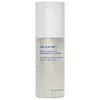What's inside
What's inside
 Key Ingredients
Key Ingredients

 Benefits
Benefits

 Concerns
Concerns

No concerns
 Ingredients Side-by-side
Ingredients Side-by-side

Water
Skin ConditioningDisodium Laureth Sulfosuccinate
CleansingGlycerin
HumectantSodium Cocoyl Isethionate
CleansingXanthan Gum
EmulsifyingCocamidopropyl Betaine
CleansingSodium Lauroamphoacetate
CleansingSodium Methyl Cocoyl Taurate
CleansingAvena Sativa Kernel Extract
AbrasiveBisabolol
MaskingZingiber Officinale Root Extract
MaskingPhenoxyethanol
PreservativeCaprylyl Glycol
EmollientParfum
MaskingChlorphenesin
AntimicrobialCitric Acid
BufferingDisodium EDTA
Water, Disodium Laureth Sulfosuccinate, Glycerin, Sodium Cocoyl Isethionate, Xanthan Gum, Cocamidopropyl Betaine, Sodium Lauroamphoacetate, Sodium Methyl Cocoyl Taurate, Avena Sativa Kernel Extract, Bisabolol, Zingiber Officinale Root Extract, Phenoxyethanol, Caprylyl Glycol, Parfum, Chlorphenesin, Citric Acid, Disodium EDTA
Water
Skin ConditioningGlycerin
HumectantPropanediol
SolventDecyl Glucoside
CleansingCaprylyl Caprylate
EmollientCaprylyl Glucoside
CleansingCassia Angustifolia Seed Polysaccharide
Skin ConditioningChamomilla Recutita Flower Extract
MaskingHelianthus Annuus Extract
EmollientCitrus Aurantium Dulcis Fruit Water
MaskingCitrus Limon Fruit Water
MaskingHelianthus Annuus Seed Oil
EmollientPersea Gratissima Oil
Skin ConditioningVitis Vinifera Seed Oil
EmollientRosmarinus Officinalis Leaf Extract
AntimicrobialPyrus Malus Fruit Extract
Skin ConditioningOryza Sativa Bran Extract
Skin ConditioningSerine
MaskingAlanine
MaskingGlycine
BufferingLysine Hcl
Skin ConditioningThreonine
Arginine
MaskingProline
Skin ConditioningHydrogenated Palm Glycerides Citrate
EmollientHeptyl Glucoside
Phenoxyethanol
PreservativeDehydroxanthan Gum
Emulsion StabilisingCoco-Glucoside
CleansingGlyceryl Oleate
EmollientCaprylyl Glycol
EmollientGlutamic Acid
HumectantPCA
HumectantCitric Acid
BufferingTrisodium Ethylenediamine Disuccinate
Tocopherol
AntioxidantBetaine
HumectantPotassium Hydroxide
BufferingPotassium Sorbate
PreservativeSodium Benzoate
MaskingSodium Lactate
BufferingSodium PCA
HumectantWater, Glycerin, Propanediol, Decyl Glucoside, Caprylyl Caprylate, Caprylyl Glucoside, Cassia Angustifolia Seed Polysaccharide, Chamomilla Recutita Flower Extract, Helianthus Annuus Extract, Citrus Aurantium Dulcis Fruit Water, Citrus Limon Fruit Water, Helianthus Annuus Seed Oil, Persea Gratissima Oil, Vitis Vinifera Seed Oil, Rosmarinus Officinalis Leaf Extract, Pyrus Malus Fruit Extract, Oryza Sativa Bran Extract, Serine, Alanine, Glycine, Lysine Hcl, Threonine, Arginine, Proline, Hydrogenated Palm Glycerides Citrate, Heptyl Glucoside, Phenoxyethanol, Dehydroxanthan Gum, Coco-Glucoside, Glyceryl Oleate, Caprylyl Glycol, Glutamic Acid, PCA, Citric Acid, Trisodium Ethylenediamine Disuccinate, Tocopherol, Betaine, Potassium Hydroxide, Potassium Sorbate, Sodium Benzoate, Sodium Lactate, Sodium PCA
Ingredients Explained
These ingredients are found in both products.
Ingredients higher up in an ingredient list are typically present in a larger amount.
Caprylyl Glycol is a humectant and emollient, meaning it attracts and preserves moisture.
It is a common ingredient in many products, especially those designed to hydrate skin. The primary benefits are retaining moisture, skin softening, and promoting a healthy skin barrier.
Though Caprylyl Glycol is an alcohol derived from fatty acids, it is not the kind that can dry out skin.
This ingredient is also used as a preservative to extend the life of products. It has slight antimicrobial properties.
Learn more about Caprylyl GlycolCitric Acid is an alpha hydroxy acid (AHA) naturally found in citrus fruits like oranges, lemons, and limes.
Like other AHAs, citric acid can exfoliate skin by breaking down the bonds that hold dead skin cells together. This helps reveal smoother and brighter skin underneath.
However, this exfoliating effect only happens at high concentrations (20%) which can be hard to find in cosmetic products.
Due to this, citric acid is usually included in small amounts as a pH adjuster. This helps keep products slightly more acidic and compatible with skin's natural pH.
In skincare formulas, citric acid can:
While it can provide some skin benefits, research shows lactic acid and glycolic acid are generally more effective and less irritating exfoliants.
Most citric acid used in skincare today is made by fermenting sugars (usually from molasses). This synthetic version is identical to the natural citrus form but easier to stabilize and use in formulations.
Read more about some other popular AHA's here:
Learn more about Citric AcidGlycerin is already naturally found in your skin. It helps moisturize and protect your skin.
A study from 2016 found glycerin to be more effective as a humectant than AHAs and hyaluronic acid.
As a humectant, it helps the skin stay hydrated by pulling moisture to your skin. The low molecular weight of glycerin allows it to pull moisture into the deeper layers of your skin.
Hydrated skin improves your skin barrier; Your skin barrier helps protect against irritants and bacteria.
Glycerin has also been found to have antimicrobial and antiviral properties. Due to these properties, glycerin is often used in wound and burn treatments.
In cosmetics, glycerin is usually derived from plants such as soybean or palm. However, it can also be sourced from animals, such as tallow or animal fat.
This ingredient is organic, colorless, odorless, and non-toxic.
Glycerin is the name for this ingredient in American English. British English uses Glycerol/Glycerine.
Learn more about GlycerinPhenoxyethanol is a preservative that has germicide, antimicrobial, and aromatic properties. Studies show that phenoxyethanol can prevent microbial growth. By itself, it has a scent that is similar to that of a rose.
It's often used in formulations along with Caprylyl Glycol to preserve the shelf life of products.
Water. It's the most common cosmetic ingredient of all. You'll usually see it at the top of ingredient lists, meaning that it makes up the largest part of the product.
So why is it so popular? Water most often acts as a solvent - this means that it helps dissolve other ingredients into the formulation.
You'll also recognize water as that liquid we all need to stay alive. If you see this, drink a glass of water. Stay hydrated!
Learn more about Water